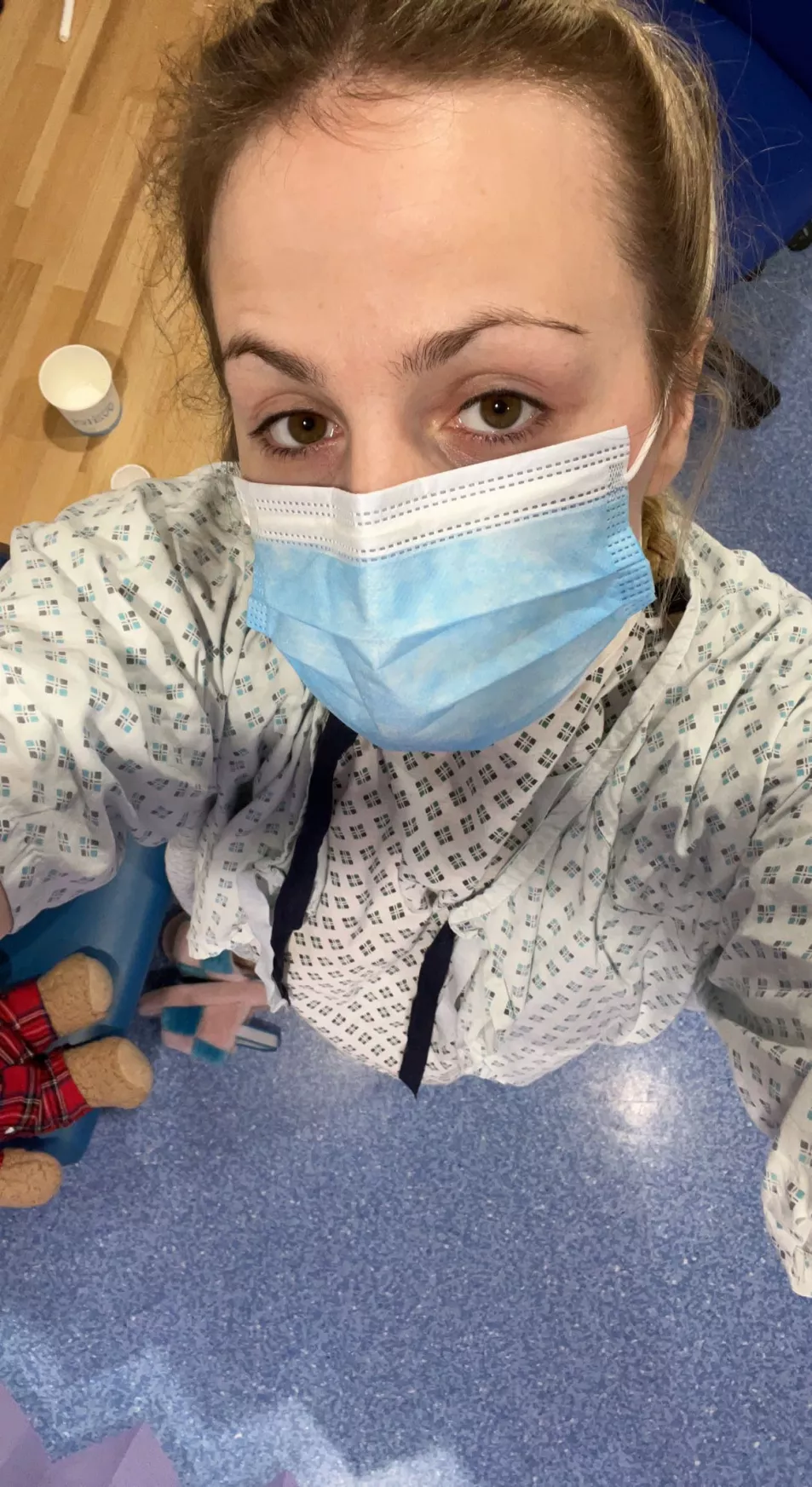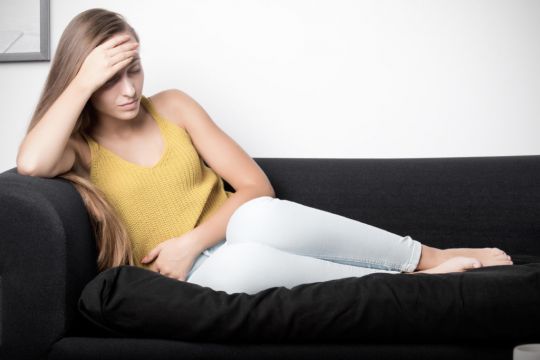Endometriosis Awareness Month (March) aims to highlight the chronic illness affecting one and a half million people in the UK – still underdiagnosed and misunderstood by many.
It often takes a laparoscopy (a surgical procedure to access the abdomen) to even be able to diagnose endometriosis, and the average sufferer waits seven and a half years for answers, according to Endometriosis UK. So many people are left with debilitating symptoms – putting their lives on hold.
Here, three women share what it’s really like to live with the condition.
Grace Hart-Coombes, 22, @gracevsendo and host of the Gynae Waiting Room podcast
“I was diagnosed with Endometriosis in March 2021 after almost 8 years of symptoms. Since the moment I started my periods, I’ve had problems,” Hart-Coombes says.
Going to the doctor for the first time with symptoms aged just 14, she was given the combined contraceptive pill and sent on her way.
“Over my teenage years, things got worse, I spent a lot of time in and out of A&E, had 50% attendance at school and was referred to various doctors. The gynaecologists did scans and did not find anything, so referred me to gastroenterologists who did various investigations which were not conclusive. After this, I was referred to a psychologist and told I had anxiety-led abdominal pains at 16.”
Several years later, after taking information to her doctor about endometriosis, she was taken seriously and had two laparoscopies – finally resulting in a diagnosis.
“Prior to my second surgery, I would sometimes have two months off work, where I would be physically unable to even take myself to the bathroom. Last year, I had to change careers due to the physical restraints endometriosis put on my body, I left what I thought would be my forever career [as a physiotherapy assistant] because it was too physically straining.”

Now she works more flexibly in marketing but her life has been constantly disturbed by the condition.
“I’ve grown apart from friends over the years, due to being unable to follow up with plans. There have been many strains throughout the years on all relationships in my life due to them struggling to understand – friends, family, and partners.
“When I have flare-ups, I have to rely a lot on my parents. I’m terrified of not being able to have children, having to have multiple surgeries, and having to manage pain and the mental health that comes along with it. I have been prescribed oral morphine for the bad flare-ups, and can’t go a day without using a hot water bottle or a tens machine.
“My life is completely controlled by endometriosis. I have had to make dietary changes to avoid possible triggers of pain, I have to be careful I don’t over-exert myself. When the pain is at its worst, I struggle to eat, I get extremely nauseous, I suffer immensely with constipation, and I become increasingly anxious about leaving the house.”
Yana Miladinova, 27, @yanamiladinova, a senior account manager in PR

“I was 13 years old when I got my first period. I was 14 years old when I was told to ‘man up’ by the school nurse and participate in PE classes despite my heavy period and horrible pain. After years of drugging myself with painkillers, going to doctor appointments and reading hundreds of articles online, I was diagnosed with endometriosis in 2021,” she says.
Miladinova has had one laparoscopy and is on track to have another, as she says medications do nothing for her debilitating pain.
“Endometriosis impacts your whole body, physically and mentally. I had to stop drinking alcohol and caffeine as they are inflammatory ingredients that intensify my pain. I even tried a gluten-free diet for a while as there was the research that said it could help with endometriosis,” she says.
“Every woman experiences it differently, but it’s usually recommended to exercise and stay fit, so there is less fat in your body that can irritate the endo tissue. But even that could be a challenge as the pain can come at any time, and I have had several occasions where I start crying during my workout – it feels like someone is tearing your flesh from the inside, and there is nothing you can do.”
But it goes beyond physical pain.
“Personally, I think endometriosis has affected me more emotionally and mentally rather than physically. No doctor prepares you for the emotional toll that this condition takes on you. You start blaming yourself and ask the worst question possible – what if I did something differently, would I have it then?
“Mentally, I’m exhausted. The condition is forever, and I have accepted that, but realising that there is something in your body that you cannot control no matter how much you want, that’s just annoying. I feel anxious most of the time thinking about the future. There have been cases where endometriosis affects women’s fertility, so what if that happens to me?”
Jo Gifford, 46, @thejogifford, blogger, author and graphic designer

Gifford’s journey with endometriosis began at 19.
“I experienced heavy periods and chronic pain that sent me to the A&E multiple times. However, it took nearly a decade for me to receive a proper diagnosis,” she says. “During that time, I felt like I was in a state of limbo, struggling to understand why my body was constantly exhausted, despite being [young].
“My fatigue and pain not only affected my personal life but also my professional life. I was working as a graphic designer and design manager while also pursuing a part-time master’s degree, but my body couldn’t keep up with the demands of a nine-to-five work schedule and social activities.
“Eventually, I hit burnout and knew I needed to find a way to manage my symptoms while still being able to work and thrive.”
Changing her work setup has brought some relief. She became a freelancer in 2006, allowing her to work remotely and asynchronously.
“Despite the challenges of endometriosis, I am grateful to have become a mother to twin girls. However, managing chronic pain while caring for them as infants was incredibly difficult.
My symptoms have fluctuated over time, and now in perimenopause, I also deal with adenomyosis which affects me every month. Some days I am filled with energy and can be a vibrant, active woman in my Forties, but other times, I am completely exhausted and struggle to get through the day.
“Living with endometriosis can feel like your life is on hold, with crippling fatigue, pain, waiting for treatments and diagnosis, and uncertainty about how you’ll feel on any given day.
“It’s challenging for those around me to understand the invisible toll it takes on me mentally, emotionally, physically, and energetically. I have to constantly battle my symptoms and adjust my plans last minute based on how I feel.
“I try to focus on the positive moments when I am able to wild swim, lift weights, spend time with friends and family, and enjoy the things I love.”







